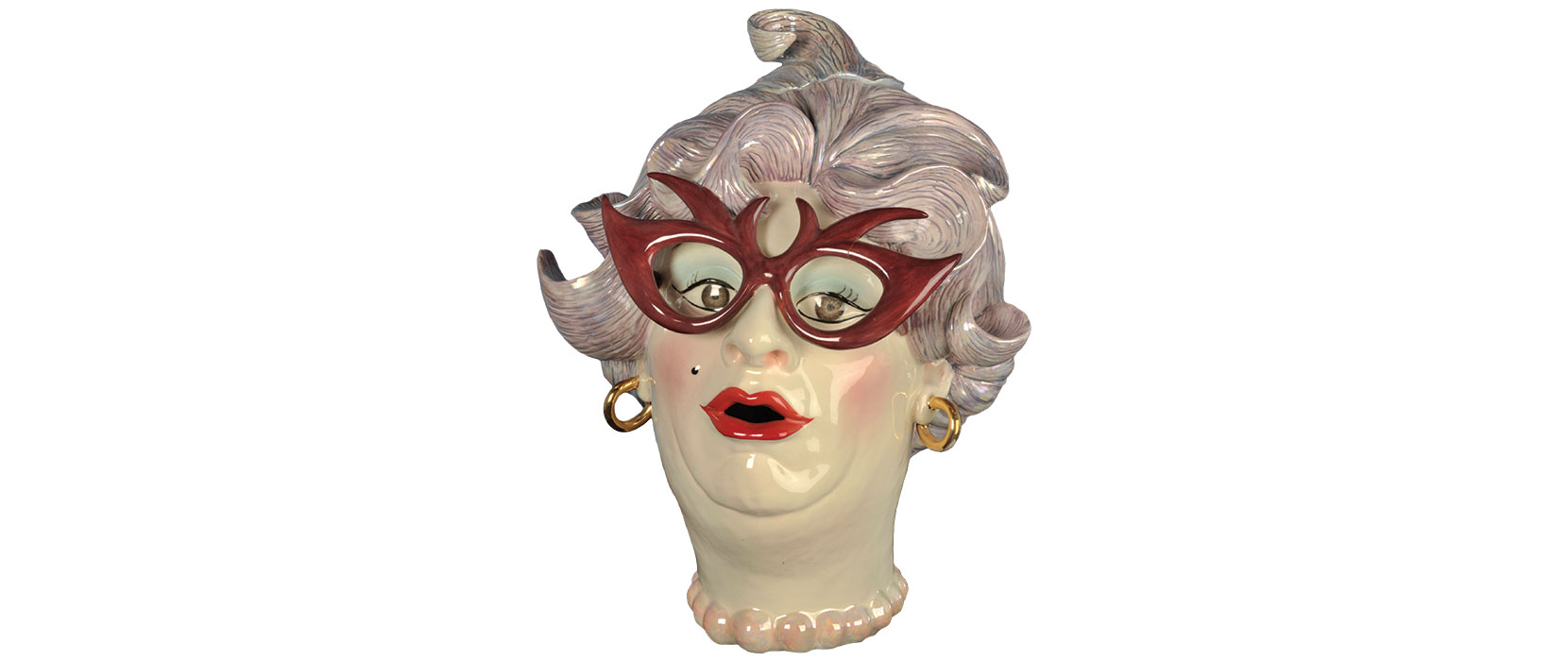BIOGRAPHICAL RESEARCH ON AUSTRALIAN ACTORS AND WRITERS
Biography is both an art and a science… The interviews consist of an intensive, in depth unstructured discussion that normally takes about five hours, or longer, sometimes several days.
Professor Anne Pender
Literary Studies, Faculty of Humanities, Arts, Social Sciences and Education
When Professor Anne Pender began her research on Barry Humphries, she explored the words that Humphries, or indeed his signature character, Dame Edna Everage, made up or brought back into the vernacular. Professor Pender was at the time working on the Australian National Dictionary at the Australian National University and found numerous words that appear in the Dictionary. These included ‘gladdy’, ‘possum’ and several rather more raunchy words used by Sir Les Patterson. Dame Edna popularised the word ‘gladdy’, short for gladiolus, Edna’s favourite flower, in her Bedside Companion of 1982, informing readers that ‘in the spring unsuspecting lawn- squatters run the terrible risk of being ‘goosed’ by an upwardly mobile gladdy’.(1)
In writing a full biography of Humphries (published in 2010), Professor Pender set out to discover how and why Humphries, a man who was in his 60’s at the time, had dressed up as a woman for his entire career, and what motivated him as a performer. She wanted to find out about his childhood and his adult life, offstage in London, how he brought himself back from alcoholism, how he convinced the likes of Gough Whitlam to appear in one of his early films, how he built up the character of Edna in the UK as a television chat show hostess broadcasting to millions of viewers every week, and how he achieved cult status in the United States.
Biography is both an art and a science. It relies on meticulous interviewing of subjects, sometimes called informants, to gain first-hand accounts of life histories. Professor Pender spends long periods with her subjects, inviting them to tell her about their early life, training, relationships with their parents, friends and mentors, and the trajectory of their careers. The interviews consist of an intensive, in depth unstructured discussion that normally takes about five hours, or longer, sometimes several days. Actors are free to take the lead in discussing their lives, and generally do so. The style is fluid so that the actors are at liberty to construct a narrative about their life, rather than simply responding to a set of questions.
The research for the Humphries’ biography required many hours in archives and many interviews with Humphries’ siblings, children, spouses, friends and dozens of other actors, directors, television producers, costume designers and musicians, as well as with Humphries himself. As she conducted her research, Anne realised that Australian actors,
Humphries’ contemporaries, had made a major contribution to cultural life over a fifty-year period, transformed the theatre and built up the television and film industries, and yet they were not regarded as serious subjects for study.
Professor Pender’s next large project set about redressing that gap and under an ARC Future Fellowship (2012-2016) she began to document and analyse the lives and work of actors such as Julia Blake, Elspeth Ballantyne, Max Cullen, Nick Tate, Tony Sheldon, Jacki Weaver and many others, publishing articles and an e-book on the working lives of actors. This research, covering 80 actors in total, emphasises that it is important to understand not only the way the actors have contributed to theatre, to television and to film, but also the ways in which they have changed the perception of Australia all over the world.
In the early 1970s actors were instrumental in the ‘Make it Australian’ campaign that brought about radical changes to the rules around Australian content on television. Before that there was very little Australian content on television and audiences were deluged with American sit-coms, soaps and other programs. The potential for saturation of our culture by other dominant cultures is a live one in the current period, with the ever-increasing opportunity for downloading of cultural content from the internet.
Professor Pender’s biographical research on Australian actors and writers has taken her all over the world, observing the way in which Australian actors such as Humphries have globalised Australian humour and have contributed to spectacular hybrid Australian-American film and television material in the last ten years.
1. Cited in The Australian National Dictionary, Second Edition, Melbourne: Oxford University Press, 2016, p. 670.
[Banner image: Dame Edna Everage teapot, 1982. Artist: Suzanne Forsyth Hatch.]


